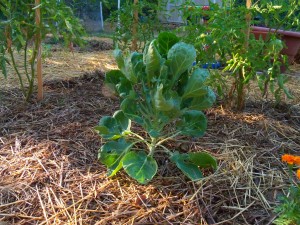By Tiffany Selvey, Master Gardener and mama of 1
With the intense heat we are experiencing this year, it’s hard to imagine that fall planting is just around the corner. While it’s a bit of a challenge to get things to germinate in the heat of summer, it must be done in order to have fresh veggies through the Autumn season.

Lettuce, cabbage, kale, broccoli, and carrots are family-friendly veggies that can be started in August and September for the fall season. If you want late season herbs, parsley, basil, and cilantro still have time to grow for a nice late season harvest. We are fortunate here to have a long growing season, so with a little planning we can actually have three full planting seasons! (four if you have a hoop house or greenhouse)
While most seeds can be started inside using peat pots, this method requires more diligence when moving outdoors. Seedlings moved from indoors to outdoors require weathering, a time of adjustment for a few weeks while slowly getting them accustomed to being outside. Since I’m a reckless (and at times a bit lazy) gardener, I like to direct sow seeds outside as often as possible. That way they weather themselves.
The key to germinating seeds outdoors during this heat is getting the soil temperature down. Bare soil sitting in the summer sun is way too hot to start any seeds, so if you’re looking to sprout anything you need two things:
1. Water: When I’m waiting for seeds to sprout and encouraging wee little seedlings to grow I water every day. As they get older, their roots will grow deeper and watering can become less frequent. During this heat and drought I water everything from 1-2 hours every night.
2. Mulch: I plant my seeds, then cover them with a thick layer of mulch, 2-3” thick. Each day I check for sprout growth. Once the seeds sprout, I move the mulch out of the way a bit to make sure they can get some sun, making sure the soil is still covered. Eventually those tough little fellas make their way toward the sun, breaking through the mulch. Light, loose mulch such as straw or wood chips are the best options for mulching while spouting. Composted sawdust or shredded newspaper will likely be too dense for the seedlings to make it through.
Frost tolerant plants such as cabbage, kale, Brussels sprouts, and broccoli will grow in our area through November, so a little work now will create a long season of yummy, fresh veggies. I have had kale survive the entire winter here in NWA. Looking for ways to use kale or cabbage? Try my Bacon and Kale Frittata recipe, then check out my Kimchi, which is spicy, fermented cabbage, perfect for warming up your insides on those crisp Autumn nights.
Tiffany Se lvey is a Master Gardener who writes about her passion for growing, cooking, and living naturally at www.20-by-20.com. When she’s not elbow deep in soil, she enjoys raising a very active son, laughing with her husband, and wrangling their five pets. Click HERE to read more in our Gardening Category.
lvey is a Master Gardener who writes about her passion for growing, cooking, and living naturally at www.20-by-20.com. When she’s not elbow deep in soil, she enjoys raising a very active son, laughing with her husband, and wrangling their five pets. Click HERE to read more in our Gardening Category.
